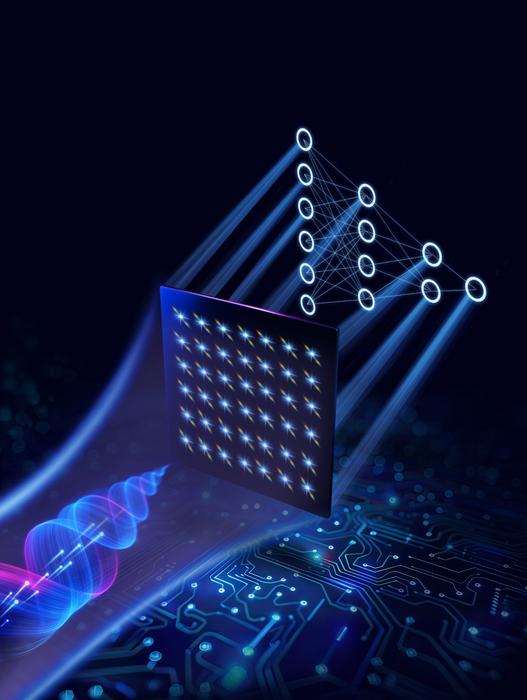In a groundbreaking advancement poised to transform the landscape of ultra-intense laser research, scientists from the University of Oxford, in close collaboration with the Ludwig-Maximilian University of Munich and the Max Planck Institute for Quantum Optics, have unveiled a novel technique capable of capturing the full spatio-temporal architecture of petawatt laser pulses in a single shot. This pioneering method, termed RAVEN (Real-time Acquisition of Vectorial Electromagnetic Near-fields), represents a quantum leap in our ability to characterize the intricate behaviors of ultra-intense lasers with unprecedented speed and precision.
Ultra-intense lasers, which can accelerate electrons to near-light speeds within the brief window of a single electromagnetic oscillation cycle, have long been heralded as formidable tools in exploring extreme physical phenomena. However, their extreme temporal and spatial fluctuations have posed substantial challenges to measurement. Until now, existing diagnostic methods required aggregating data from hundreds of repetitive laser pulses, which not only obscured real-time variations but also hampered experimental efficiency and accuracy.
RAVEN disrupts this paradigm by condensing the entire measurement process into a single laser shot. By harnessing the interplay of micro-focusing and spectral dispersion, this technique disentangles the complex light pulse structure in both space and time. The resulting data encapsulates the full vectorial electromagnetic field, including polarization states and phase information, which are critical for comprehending and optimizing light-matter interactions at extreme intensities.
.adsslot_yH8qiO9vle{ width:728px !important; height:90px !important; }
@media (max-width:1199px) { .adsslot_yH8qiO9vle{ width:468px !important; height:60px !important; } }
@media (max-width:767px) { .adsslot_yH8qiO9vle{ width:320px !important; height:50px !important; } }
ADVERTISEMENT
Central to the RAVEN method is an innovative optical setup that divides the incident laser beam into two separate paths. One subset of the beam undergoes spectral dispersion, allowing the temporal evolution of wavelengths to be mapped. Concurrently, the other beam passes through a birefringent material, effectively segregating light components based on their polarization states. A subsequent microlens array, consisting of a meticulously arranged grid of microlenses, captures the wavefront geometry, enabling precise reconstruction of the laser’s spatial profile.
This carefully orchestrated sequence is recorded by a state-of-the-art optical sensor capable of capturing comprehensive information in a single exposure. The acquired data is then subjected to advanced computational algorithms, which reconstruct the complete spatio-temporal vector field of the ultra-intense laser pulse. This approach circumvents the conventional need for temporal accumulation, enabling real-time diagnostics unmatched in previous laser characterization methods.
The technique was rigorously tested on the ATLAS-3000 petawatt-class laser system situated in Munich, revealing subtle yet significant wavefront distortions and temporal shifts within the pulse—collectively identified as spatio-temporal couplings. These effects, which could degrade the performance of high-intensity laser experiments, were previously elusive in real-time observations. With RAVEN, researchers were able to quickly identify and correct these imperfections, vastly improving instrument precision.
Such capability to monitor and adjust laser pulses instantaneously opens new horizons for experimental physics. For instance, in plasma physics and particle acceleration, fine-tuning laser parameters on-the-fly could lead to greater control over energetic particle generation and plasma behavior. Furthermore, in the realm of high-energy density science, precise laser pulse shaping facilitated by RAVEN can optimize experimental conditions that probe matter under extremes of temperature and pressure.
Beyond energy applications, the ability to fully characterize vectorial electromagnetic fields in ultra-intense lasers paves the way for explorations of novel quantum electrodynamics phenomena. For example, RAVEN may facilitate experiments probing photon-photon scattering in vacuum conditions, a frontier subject where two intense laser pulses intersect with the potential to reveal fundamental interactions predicted by QED but not yet observed directly.
The development of RAVEN also underscores a strategic simplification in optical diagnostics. As co-author Dr. Andreas Döpp explains, the realization that ultra-intense pulses are confined both spatially and temporally lends itself to a resolution threshold below which further precision is redundant. Employing micro lenses within the diagnostic system capitalizes on this limit, yielding a streamlined and robust apparatus without compromising measurement integrity.
Lead researcher Sunny Howard emphasized the transformative nature of RAVEN: “Capturing the complete vectorial structure of an ultra-intense laser pulse in real-time enables a new class of experiments and system optimizations. This capability not only advances our fundamental understanding of laser-matter interactions but also provides practical tools for improving laser-based technologies that once seemed out of reach.”
Co-author Professor Peter Norreys highlighted the technique’s potential to revolutionize laser science: “Traditional methods, requiring extensive averaging over multiple shots, inherently masked dynamic pulse variations. RAVEN’s single-shot spatio-temporal characterization accelerates discovery and innovation across numerous branches of physics, ultimately pushing the boundaries of what we thought possible with high-power lasers.”
The implications of RAVEN transcend laboratory confines, resonating across diverse scientific disciplines and industrial applications. As laser-driven particle accelerators and high-field quantum electrodynamics experiments increasingly demand precision and adaptability, this breakthrough measurement technique equips researchers with an indispensable tool to fulfill these ambitions.
Looking forward, the research team envisions extending RAVEN’s implementation to a broader spectrum of laser facilities worldwide, aiming to catalyze advancements in fusion energy research, particle acceleration technologies, and the fundamental studies of light-matter interaction at unprecedented intensities. Their ongoing efforts promise to reshape the frontiers of laser physics and harness the power of light in ways previously relegated to theoretical speculation.
Subject of Research: Ultra-intense laser pulse measurement and characterization
Article Title: Single-Shot Spatio-Temporal Vector Field Measurements of Petawatt Laser Pulses
News Publication Date: 26 June 2025
Web References: http://dx.doi.org/10.1038/s41566-025-01698-x
References: Nature Photonics, DOI 10.1038/s41566-025-01698-x
Image Credits: Ehsan Faridi
Keywords
Physics, Experimental physics, Laser physics
Tags: collaborative scientific researchelectron acceleration methodsextreme physical phenomena explorationinnovative laser measurement techniquesOxford University laser researchpetawatt laser characterizationquantum optics advancementsRAVEN techniquereal-time laser pulse analysissingle-shot laser diagnosticsspatio-temporal measurementultra-intense laser pulses





